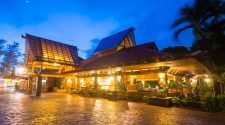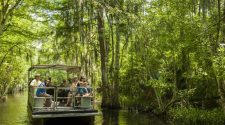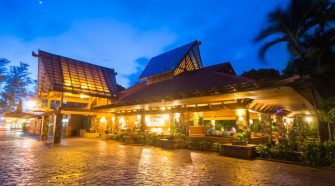An African safari is a wonderful opportunity – an outing crafted in the custom of loaded 13th-century traders who first hunted down the plains of Africa for undomesticated game awards to append on their walls. Now, tourists look for photo opportunities besides than occasions to kill, but they ran into similar aspects that have intrigued travellers throughout history: grands of zebras migrating over emerald grasslands, masses of florescent flamingos creating a field of gloss over a clear soda lake, lions preying on a hard-earned kill.
Several travellers hasten to Africa in browsing for the “big five”: buffalo, lions, leopards, elephants and rhinos. The adventure to get close to these animals in their raw native surroundings is an once-in-a-lifetime chance, but your travel to the Africa is anything but a visit to the zoo. Safaris can be physically heavy and trying, and you might not find all the wild animals you expected. Because virtually all safari destinations are in ripening sub-Saharan nations, travellers must conduct guarded safety and health precautions. Whenever you are designing a safari (or just daydreaming about it), be as geared up as possible. Get a few beneficial guidebooks, chat to acquaintances that have been to Africa and explore, search, research. We’ve narrowed down some crucial safari fundamentals, from picking out a destination to getting vaccinated, to aid you start planning a successful African visit.
Types of safaris
For the most part, safaris are costly kind of vacations. But as with some other case of trip, you’re able to tailor-make your safari to fit your personal budget. The length of your safari will affect its price – while you might choose to cut your journey short to save hard currency, the longer you stay, the less you will in all probability pay on a per-night basis.
Luxury safaris
A luxury safari supplied by a well-known tour operator often price thousands of dollars per individual, per week, with all-inclusive costs covering tours, meals, beverages and outings. Fully plied luxury bundles provide holidaymakers the leisure of home in wild Africa. Allowances range from air-cooled rooms to dashing tents. Ultra-luxurious safari camps can price over $1,000 a night.
Overland or ranging safaris
Overland (also known as mobile) safaris are broadly speaking the most inexpensive kind of organized tour safari. A mobile safari will need for campsite accommodations, and you’ll most probably move in a group with different adventurers. Overland safaris are generally sought after – you may be needed to dig in with chores such as cooking meals or pitching camp.
U-drive
Pick out a public game park, self-drive and lap the African bush on one’s own! Because u-drive safaris are only applicable in public parks that generally have established roads and signs, you need not care about getting lost in the fields of Africa or turning nourishment for a starving lion. For the most affordable conceivable safari, u-drive is your better bet. You are able to pay up for a la carte for meals, circuits and accommodations, allowing you to take the most inexpensive housing you are able to line up or travel the bush on one’s own rather than chartering a guide.
One imaginable drawback of a hire car safari is that without an informed local guide, you could miss some wildlife.
Where to go
Every country in Africa is unique. We know that it is inconceivable to capture the tone and refinement of an entire country in one paragraph, but lower down is a shortened overview of some popular African safari destinations to get you set off. The best and commonest domains in Africa for safaris are East and Southern Africa, which offer great open areas and rambling packs of spectacular beasts.
East Africa
Republic of Kenya: Kenya’s most bristling wildlife can be noticed in the Masai Mara park (a part of the immense Greater Serengeti), where substantial crowds of beasts make an yearly migration over the open areas. But on the distant end Masai Mara and the Serengeti lay a great deal of other exclusive parks with teemingness of wildlife, including the soda lakes of the Great Rift Valley and Lake Bogoria, where thousands of colored flamingos occupy. Though Republic of Kenya is amidst the most sought-after safari destinations, the country has recently had vast political excitement. Remember to check Department of State advisories ahead of undertaking a trip to Kenya or any other African nation.
Tanzania: same as with Kenya, Tanzania fosters part of the Serengeti National Reservation – the best park in which to collide with great herds of wildlife in Africa. Super significant sites include Mount Kilimanjaro, maritime reservations off the seacoast and the Ngorongoro conservation Area, place of the Ngorongoro Crater and Oldupai Gorge (aka the birthplace of Mankind). The Ngorongoro volcanic crater is among the biggest eruptive craters on earth. Over 30,000 creatures live in the crater; it has the largest lion population in the world.
Republic of Uganda: The most famed safari destinations in Republic of Uganda are the country’s many primate reserves. Bwindi dense Forest and Ngamba Island extend tourists the extraordinary & memorable opportunity to get a near view of primates in their natural habitat. Visitors can also view crocodiles, hippopotami and unusual birds, and see the thundering water of Murchison Falls at Murchison Falls National Reserve on the Nile River.
Southern Africa
Republic of Botswana: maybe the most high-dollar destination in Africa due to the regime’s campaign for high-end tourism, Republic of Botswana has smaller crowds than several other safari destinations, and is a primary venue for elegant packages. Check wildlife in game reserves such as Chobe National Park, famous for a teemingness of elephants, or Moremi Wildlife Reserve, which provides a whole lot of the celebrated “big five.” You will be able to also journey to the Okavango Delta in Botswana – look for crocodiles, buffalo, zebras, hippopotami and many other creatures in the delta’s crooked watercourses and islands.
South West Africa: Namibia is below the radar for a few safari explorers – foresee fewer upmarket game parks – and is clustered with awe-inspiring elemental wonders from the Fish River Canyon to the Namib Desert. You’ll find over a hundred species of mammals in Etosha National Park, including endangered animals like the black rhino. Desert elephants and zebra drift the dry landscapes of Skeleton Coast National Reserve in Namibia – the driest base in Africa.
Republic of South Africa: This is a particularly popular address for safari tourists, so you are able to come across a well-organized and modern holidaymaker substructure – as well as a good deal of extra holiday-makers in the peak-season. The most infamous park is Kruger National Park, which is base to an astonishing diversity of African beasts and is settled in the biggest preservation area in the world.
When to go
Africa is an immense continent with safari ventures acquirable crossed 1000’s of miles, so the best time to visit Africa depends upon your particular destination. Overall, it’s better (but more overpriced) to travel in the dry time of year, which agrees with the region’s wintertime. Because safari destinations are in the Southern Hemisphere, their seasons run opposite to that of North America. Winter is from June to September, and summer time is from December to March.
For additional info kindly visit our website “The Hidden Vintage Tours” www.hiddenvintage.com
About the Author
Andrea Hatem from Hidden Vintage Tours is an expert in the area of Luxury African Travel.






